I'm not a monster
Science has turned squid from monsters, about which fairy tales tell, into a miracle
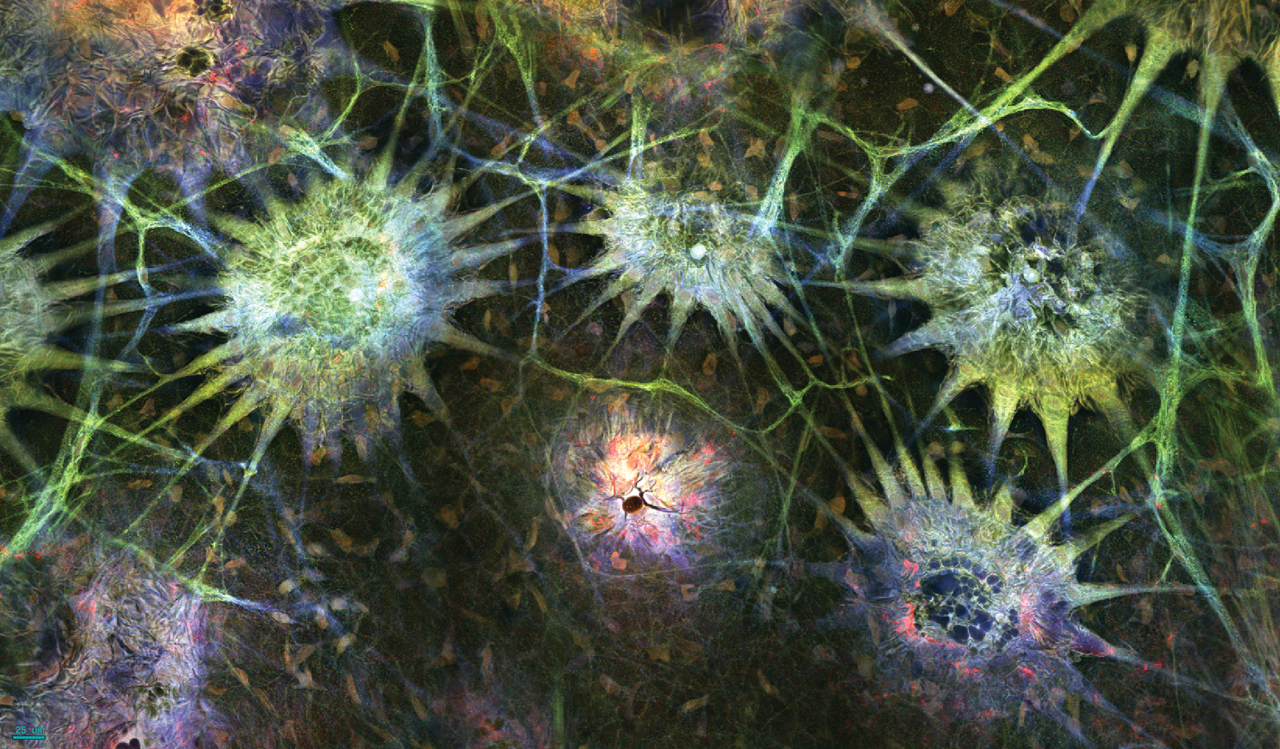
Chromatophores on the skin of an adult squid tinted with antibodies. Radial lines - muscles, the remaining connecting lines, most likely, are nerves. All that can be seen in the photo, in reality, has a size of one and a half mm
Cephalopods occupy an honorable place in cultural myths. Their long tentacles, large, unblinking eyes, and simply the enormous size of a giant squid frightened us at least from the Middle Ages, when stories frightened traders with monsters who were waiting for them in the dark seas ready to devour whole ships with crews.
But science has done a lot to dispel these horror stories, and at the same time feed our surprise by how amazingly much the cephalopods differ from us. We already know that these creatures are pretty smart, and that their brains are not organized in the same way as ours. Some octopus species can transcode their genes temporarily for adaptation. Squids change the color and pattern of their skin either to hide from predators or to communicate with each other. “We sometimes like to change our appearance with tattoos or cosmetics, but we don’t have anything close that complex that squid has,” said Steve Senft, a neuroscientist at the Marine Biological Laboratory in Woods Hall, PC. Massachusetts.
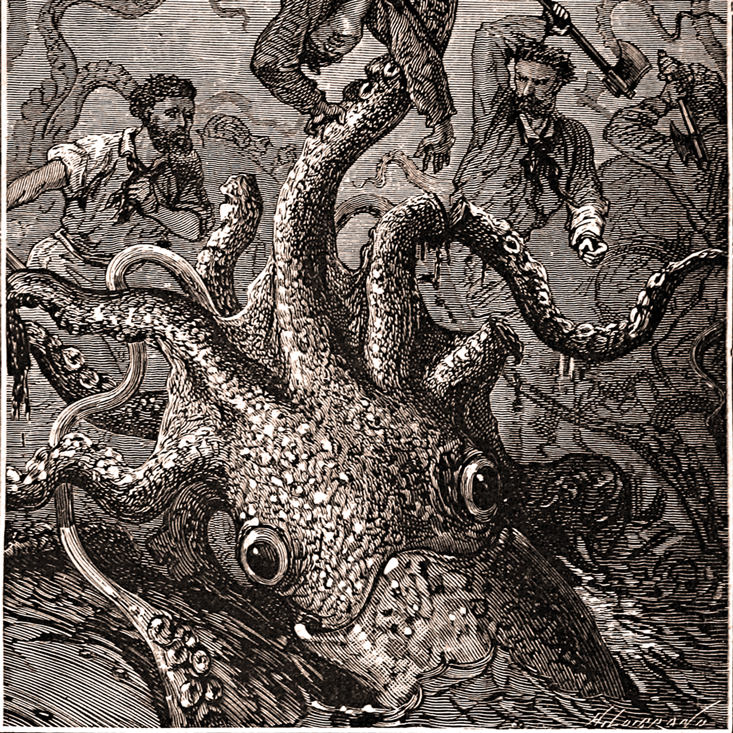
An iconic illustration from the 1870 edition of “Twenty Thousand Leagues Under the Sea” by Jules Verne shaped the image of a killer squid for many generations to come.
Senft studies the species Doryteuthis pealeii (long- eared coastal squids), whose representatives are about 30 cm long and live in the western regions of the Atlantic, from Newfoundland to Venezuela. Senft explains that tiny, unique cells, chromatophores and iridophores are embedded in their skin. “These organs are amazingly detailed and from our point of view completely alien,” he says. - Chromatophores are designed to absorb light of different wavelengths, and iridophores reflect it. Chromatophores are controlled directly by the brain of the animal, and the nervous system plays its role here. Squid can produce many different patterns. They can stain the fins, tentacles, heads, parts of the body called the mantle. They can color different parts of the mantle in different ways, and some animals can send waves of reflections all over their bodies, and this is a fascinating sight. ”
Senft says squids are capable of producing dozens of drawings. And what can they tell each other? “I personally don’t know their language,” says Senft. “But it is clear that they have a communication system.” When the squid is swimming in the joint, it shows different pictures to different squid. You can often notice how the squid shows different patterns on different parts of the body. He demonstrates one pattern to a female swimming alongside, the other to the male from the other side. Here everyone can draw their own conclusions, but I think this is the most obvious example of a set of behaviors finely organized in a school or in a group of animals. ”
Working with a microscope, Senft meets pictures, beautiful in themselves. “Sometimes their beauty overshadows informational content,” he says. Senft provided us with a few images he received from squid. They demonstrate the transformation of the monster into a miracle. “It seems to me that the more people show patience and look at their surrounding nature, the more they will be surprised,” he says.

Chromatophores on the skin of an adult squid tinted with antibodies. Radial lines - muscles, the remaining connecting lines, most likely, are nerves. All that can be seen in the photo, in reality, has a size of one and a half mm, but contains so much information that neurobiologist Steve Senft can enlarge the image of a coil of nerve fibers and almost distinguish individual axons. “We cannot yet trace each of them, but this is our goal,” says Senft. “From this image it is not obvious, but when you look at hundreds of these, you will begin to understand how this system works.”
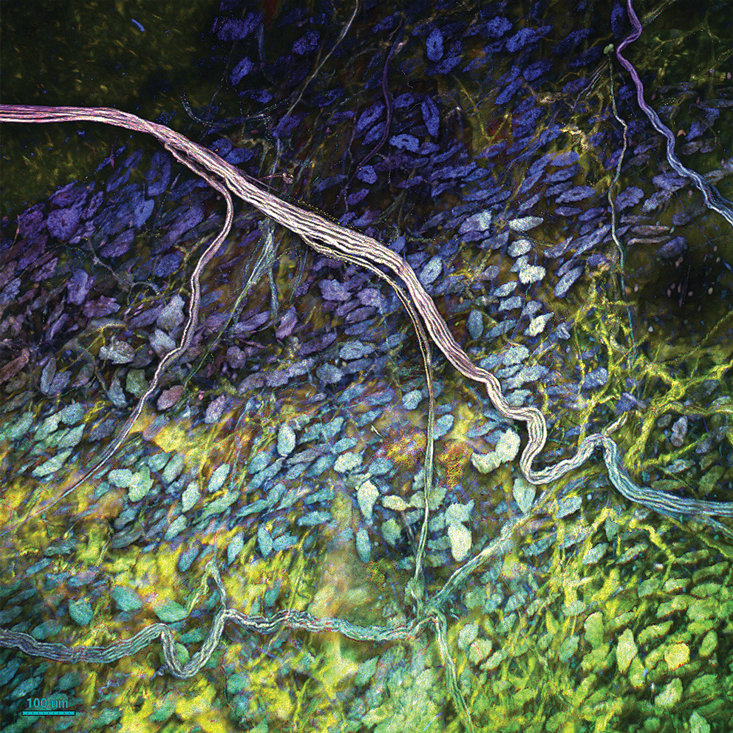
This image, reminiscent of the works of French Impressionists, contains small blue, green and purple leaf-like structures - these are iridhophores, the cells responsible for the squid's ability to change color and design. Iridophores are arranged in the form of overlapping plates, and depending on their relative position, reflect different colors. The antennae-like ramifications are nerves that transmit information from the brain to iridophora about how they should be located. “These images are just a glance at the keyhole compared with the diversity that exists in nature - and this is another reason for the temptation of research. After each preparation, I see something new, ”says Senft.
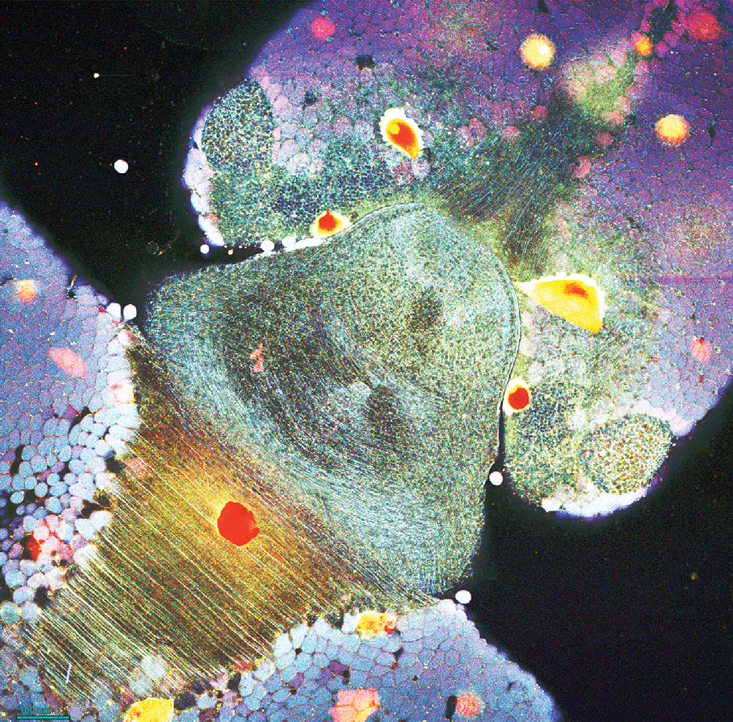
Squid embryo under the microscope. Some colors are obtained due to the reflection of the laser rays from the material or from the dyes introduced by the Saint to the fabric. Red and yellow dots are chromatophores responsible for red, yellow and brown shades of squid. They are not visible in the photo, but the chromatophores are surrounded by muscles in the manner of the spokes in the wheel, which, through contraction and relaxation, change the diameter of the chromatophore and their apparent size.
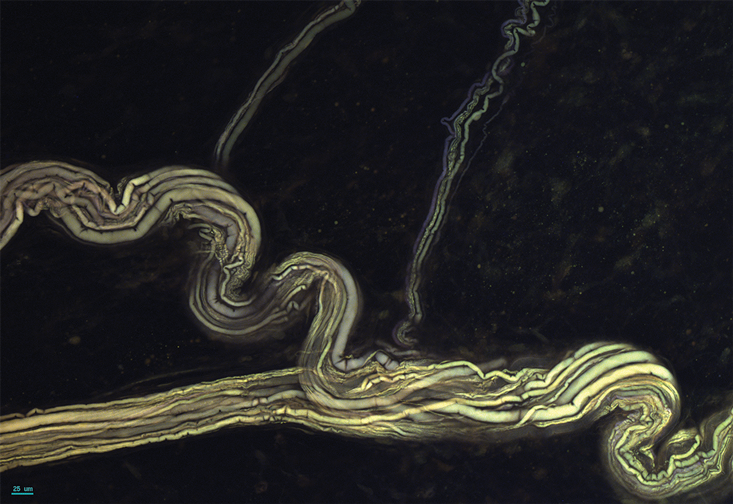
These cables are nerves, each of which consists of tiny wires, axons. Axons branch to various targets, such as chromatophores and iridophores. When activated, one neuron can change the whole set of chromatophores and give the squid red color or form a spotty pattern like the color of quail eggs. “Under the microscope, I saw dozens of such axons, and the geometry of some of the branches is amazing,” says Senft.
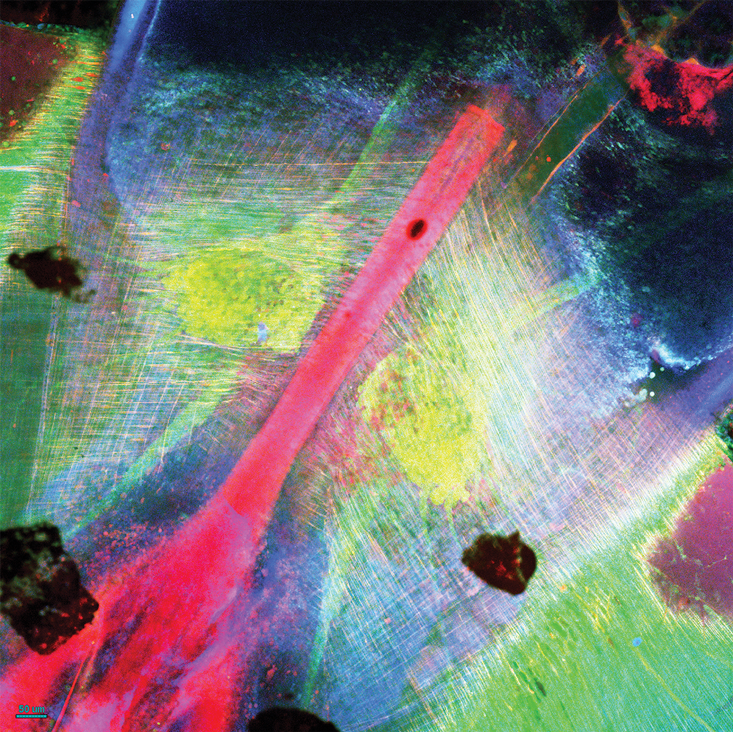
Recently hatched squid with an almost transparent body. The red-pink tube in the center is a “handle”, a solid structure that gives rigidity to the soft body of a squid, and behind it a dark green digestive system is partially visible. Black spots - chromatophores. The yellow areas, star ganglia , make up the nervous system. “These are the intersections of many of the inputs and outputs, and this is something like a small computer outside the main brain,” says Senft. “You can see where the nerves are going, these are translucent green lines.”

Each black circle is a chromatophore, and the illuminated stems emerging from them are the nerve fibers of an adult squid, which Senoft tinted with a special dye. “This communication network seems like a messy web,” says Senft. Similar images help him to understand the complexity of the squid signaling system.
All Articles